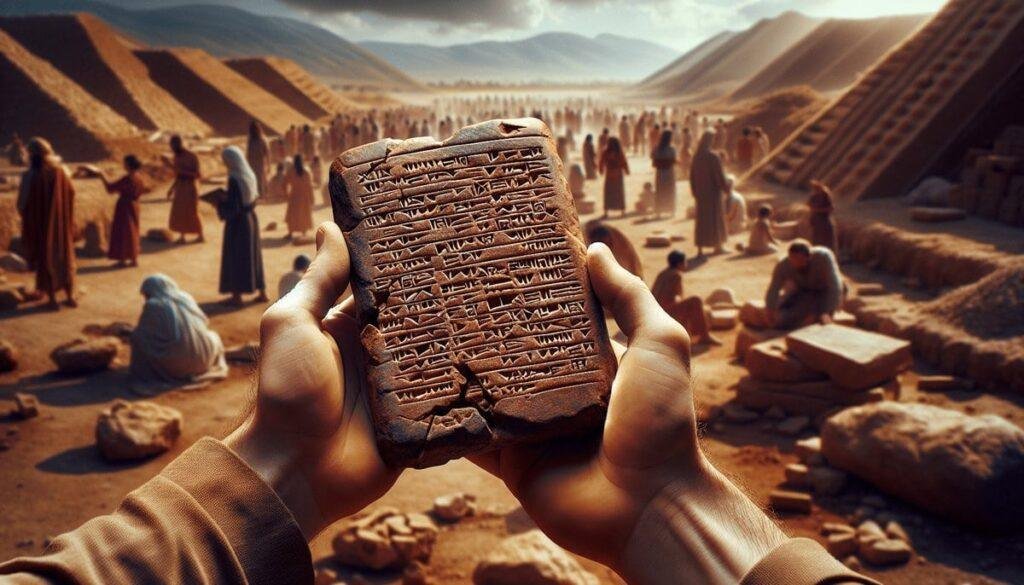Have you ever wondered how the ancient builders of the Temple Mount managed to construct such a monumental and enigmatic structure with the tools they had at their disposal? The methods behind the construction of the Temple Mount have intrigued historians, archaeologists, and enthusiasts for centuries.
Introduction
The Temple Mount stands as a testament to human ingenuity and spiritual dedication. Situated in the heart of Jerusalem, this site holds significant historical and religious value. Our exploration sheds light on the remarkable construction methods used to build this iconic structure. In this article, you will learn about the historical backdrop, the fascinating archaeological evidence unearthed, and the profound significance of these revelations.
Discovery Context
Biblical Reference
The Temple Mount is profoundly rooted in biblical history. Often regarded as the site of Solomon’s Temple, it is depicted in the Old Testament as God’s chosen place for His temple. The biblical narrative provides both a spiritual and a geographical context, which makes its construction an exceptional subject for exploration.
Historical Background
Jerusalem, a city with a tumultuous past, has seen its share of conquerors, each leaving an indelible mark on its landscape. The Temple Mount, known as Haram al-Sharif in Islam, has echoed the prayers and witnessed the struggles of many faiths. Historically, this site has undergone numerous reconstructions, with the most prominent being King Herod’s majestic expansion around 20 BCE.
Geographic Location
At the crossroads of civilizations, the Temple Mount’s location in ancient Jerusalem was strategic. Flanked by valleys and perched upon a hill, its elevation provided a defensive advantage. The selection of its site was not merely religious but also practical, highlighting the blend of purpose and spirituality that characterized its construction.
Recent Findings
Recent archaeological discoveries have opened a new chapter in the understanding of the Temple Mount’s construction. Excavations have revealed artifacts and remnants that offer insights into the engineering techniques and materials used by ancient builders, further reinforcing the significance of this monumental endeavor.
Archaeological Evidence
Specific Artifacts
Within the dusty layers of Jerusalem’s soil, archaeologists have unearthed tools and remnants that provide a glimpse into the past. Among these findings are meticulously crafted stones, bronze instruments, and pottery shards that offer clues about the daily lives and practices of the laborers who built the Temple Mount.
Dating Methods
Determining the age of the Temple Mount’s construction has been a challenging yet rewarding endeavor. Archaeologists utilize a combination of radiocarbon dating, stratigraphy, and typological analysis to pinpoint the era of various layers of the site. These methods have allowed experts to piece together a more comprehensive timeline of the temple’s construction phases.
Physical Descriptions
The sheer scale and precision of the Temple Mount’s construction are awe-inspiring. Enormous stones, some weighing up to several tons, were precisely hewn and transported to the site. These megastructures were carefully aligned, showcasing advanced knowledge of engineering principles and astute planning.
Expert Interpretations
Scholars continue to interpret the evidence gathered from the Temple Mount with great interest. Experts suggest that the construction methods likely involved a combination of human labor, innovative engineering, and astute resource management. These interpretations provide a window into the remarkable capabilities of ancient builders.
Significance
Biblical Implications
The Temple Mount’s construction methods are deeply intertwined with biblical narratives. This sacred site symbolizes divine presence and human devotion, providing a physical connection to the stories and teachings of the Bible. The meticulous construction further underscores the significance of the temple in Jewish tradition and its reverence in Christian beliefs.
Historical Impact
From a historical perspective, the construction of the Temple Mount marked a pivotal moment in architectural and religious history. It served as a monumental symbol of authority and faith, influencing subsequent architectural endeavors across civilizations. The techniques employed set a standard for future constructions, both in complexity and scope.
Modern Understanding
In the context of modern archaeology, the revelations surrounding the Temple Mount’s construction offer invaluable insights into ancient building practices. These findings facilitate a greater understanding of the technological advancements and cultural dynamics of the time. They bridge the past and present, enhancing our appreciation of human achievement.
Research Status
Current research on the Temple Mount’s construction is ongoing, with scholars and archaeologists continually uncovering new facets of its history. As technology advances, so do the methods for analyzing and interpreting archaeological data, promising further revelations and deeper understanding.
Conclusion
In summary, the Temple Mount’s construction methods have been a subject of fascination for generations, enriching our knowledge of history and faith. The monumental effort required to construct this site speaks to the ingenuity and dedication of its creators. As research progresses, we anticipate more discoveries that will shed light on this remarkable structure.
For those interested in further exploring this topic, engage with recent archaeological publications or visit exhibitions showcasing the latest findings. Your understanding and appreciation of the Temple Mount will undoubtedly deepen as you continue to uncover its secrets.





